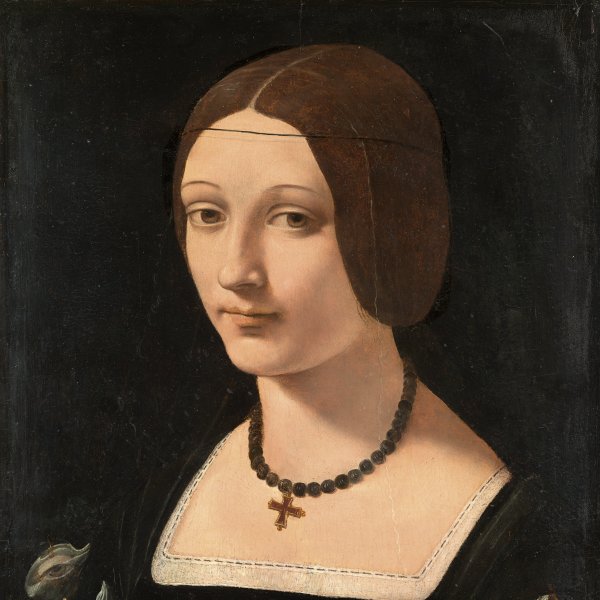Giovanni Antonio Boltraffio
A member of a Milanese aristocratic family, Boltraffio was independently wealthy and was able to devote himself to painting without economic restraints. He trained in the workshop of Leonardo da Vinci, which he must have entered shortly after Leonardo arrived in Milan, remaining as an assistant and collaborator until the end of the 15th century. His first works depend to such an extent on Leonardo that it has been suggested that the latter was partly responsible for them, for example, the Madonna in the Museo Poldi Pezzoli, Milan. Boltraffio soon, however, developed his own style and his skills as a portraitist are particularly outstanding. In 1500 he travelled to Bologna where he painted an altarpiece of The Virgin and Child with Saint John the Baptist, Saint Sebastian and two Donors for the church of Santa Maria della Misericordia (Paris, Musée du Louvre). This work reveals his new interest in the work of other artists such as Pietro Perugino and Francesco Francia. Shortly afterwards, in 1502, is again documented in Milan where he was commissioned to paint a Saint Barbara for the congregation of Santa Maria presso San Satiro (Berlin, Gemäldegalerie), a work that combines his Bolognese style with other new influences derived from artists such as Bramantino and Andrea Solario. Boltraffio’s permanent residence in Milan is confirmed in a document of 1503 in which he appears as one of the members of the jury that selected the projects for the door of the north transept of the cathedral.
Boltraffio’s last documented work is The Virgin and Child with Saint John the Baptist and a Donor (Budapest, Szépmüvészeti Múzeum), which was commissioned in 1508 for the Da Ponte chapel in Lodi cathedral. His activities between that date and his death in 1516 are difficult to reconstruct although his residence in Milan, in the San Paolo in Compedo quarter, is documented. This has led to the assumption that he only accepted the occasional commission or that he ceased working as a painter.





